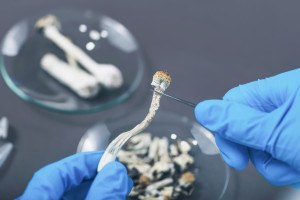Meet the Journalist Publishing His Entire Genome Online

Carl Zimmer/photo provided
For $199, 23andMe will collect your saliva, use it to learn about your genes, and post the findings to an online account within roughly a month. It’s fast, it’s easy, and it’s popular.
Carl Zimmer was not interested in 23andMe. He wanted to go bigger—much bigger.
Zimmer, a science journalist who’s been covering genetics for years, wanted the raw data associated with his genome. He wanted to know about all 3 billion of his DNA base pairs.
“Having talked with scientists, I knew that you can actually go down deep into a genome if you can get your hands on the raw data, and then analyze that,” Zimmer says. “Rather than just getting a report and looking at a pretty website with some results, I wanted to get my hands on that data, so that then I could take it to scientists and we could really go in deep.”
Zimmer didn’t stop at personal curiosity. He decided to chronicle his experience for STAT, in a series called “Game of Genomes.” The series’ first installment—or episode, in keeping with the loose Game of Thrones theme—is out now, and the rest will drop throughout the month. A companion website also houses his actual genomic data.
Getting there, however, wasn’t easy. For one, Binary Alignment/Map (BAM) files, where raw genomic data is stored, are largely unavailable to the public. Illumina, the company that sequenced Zimmer’s genome, only releases them for use in clinical research. So Zimmer joined PeopleSeq, a study that examines how healthy people use and respond to their own genomic data, to get his hands on his BAM file. Half a year later, a hard drive arrived on his doorstep.
From there, he enlisted scientists, including some from the Broad Institute and Yale University, to sift through the 70 gigabytes of information housed on the hard drive, and uncover all the ways his information differed from the baseline human reference genome. (3,559,137, as it turns out.)
Despite those 3,559,137 variations, Zimmer found that he has a “very boring genome, medically speaking”—meaning, as far as scientists know, none of those discrepancies suggest serious health problems. Even a “boring” genome, however, could help advance science.
“We don’t really know all that much about the human genome, relatively speaking. We don’t really know what some particular variant means for our health, and the only way we’re going to find out is to study them,” Zimmer says. “The only way we’re going to study them is if scientists have access to them. One way to make that happen is to just donate your genome, which is something I decided to do.”
Even matching a face to a BAM file is a novel experience in the science world.
“It was a little disorienting for some of the scientists for me, a living and breathing human being, to come to them and say, ‘Here’s my genome, I want you to look at it and tell me about it,'” Zimmer says. “I think for a lot of them, it was a really interesting experience because it reminded them that they are dealing with human beings, and what they’re doing actually is really interesting to lots of people.”
Interesting though it may be, don’t expect to follow in Zimmer’s footsteps any time soon—if ever. Comprehensive human genome sequencing has come a long way since its birth, but there are still regulatory barriers, cost barriers, and man power barriers that stand in the way of sequencing and analyzing genomes on any sort of large scale. (Consumer companies like 23andMe, for example, look at only a tiny fraction of the DNA housed in a genome.)
That’s where “Game of Genomes” comes in.
“The only reason that I did this project, in the end, was because I just wanted to show, with one genome that happened to be my own, that human genomes are actually really fascinating,” Zimmer says. “A human genome is a really marvelous thing.”
You can read “Game of Genomes” here.


